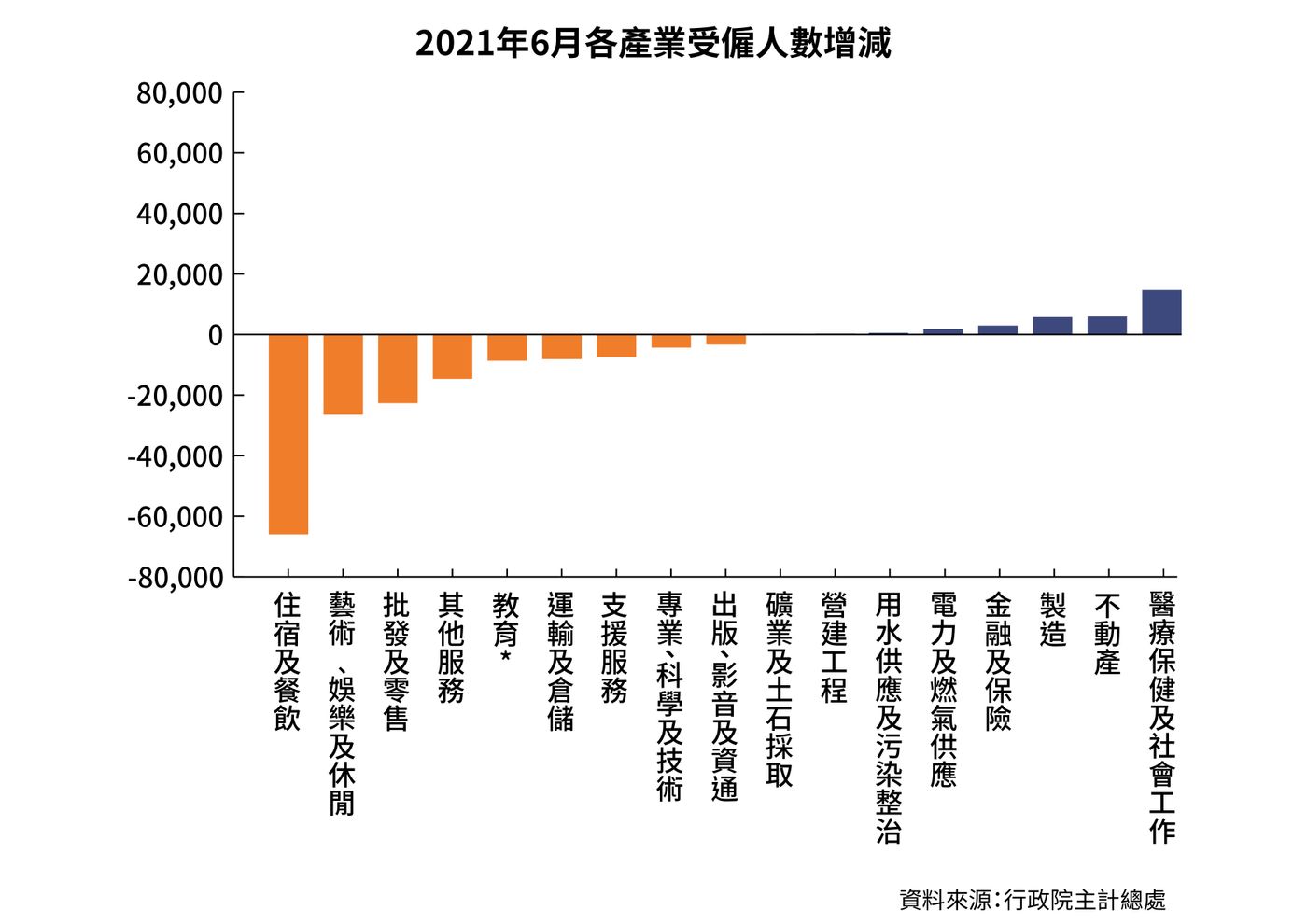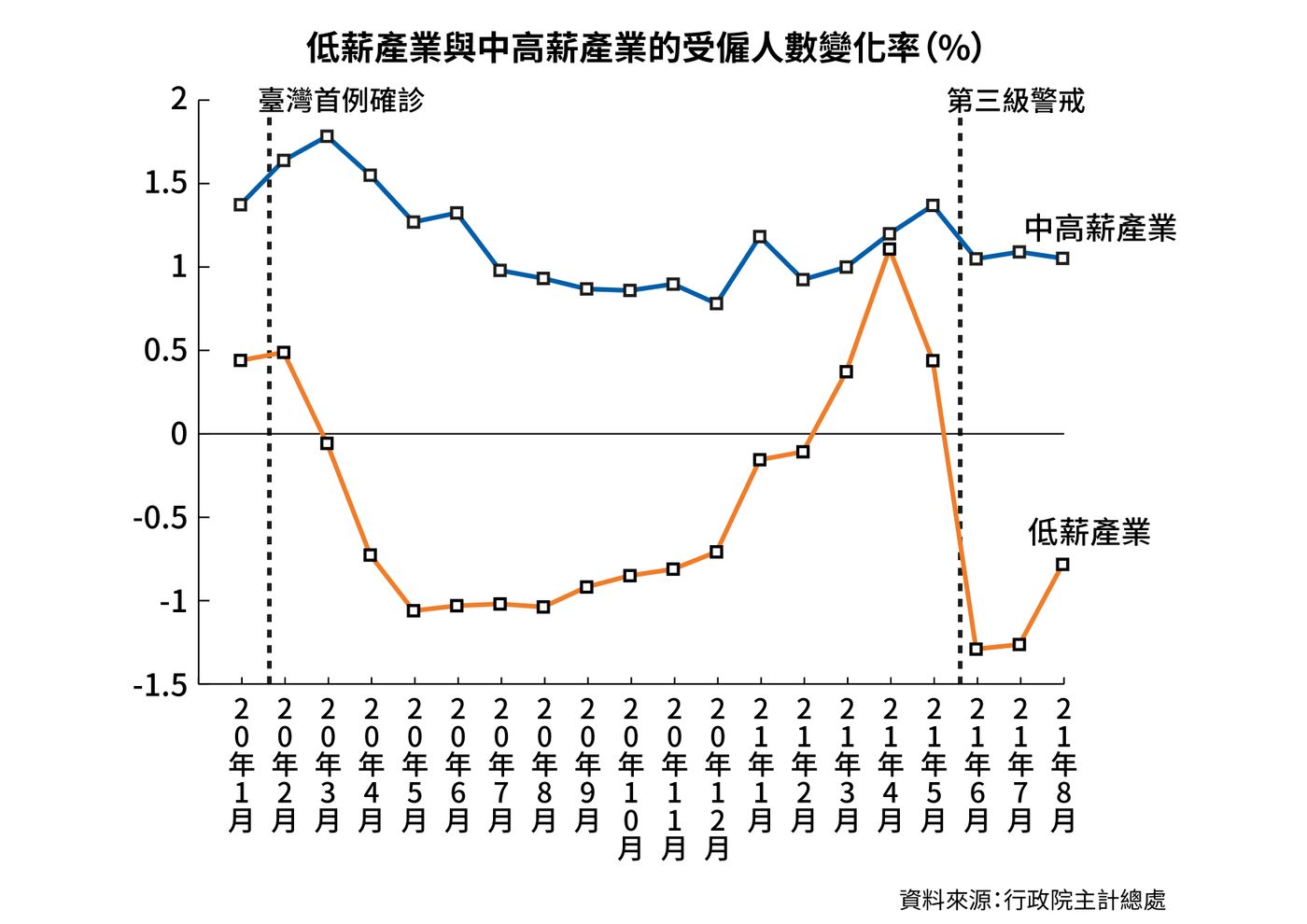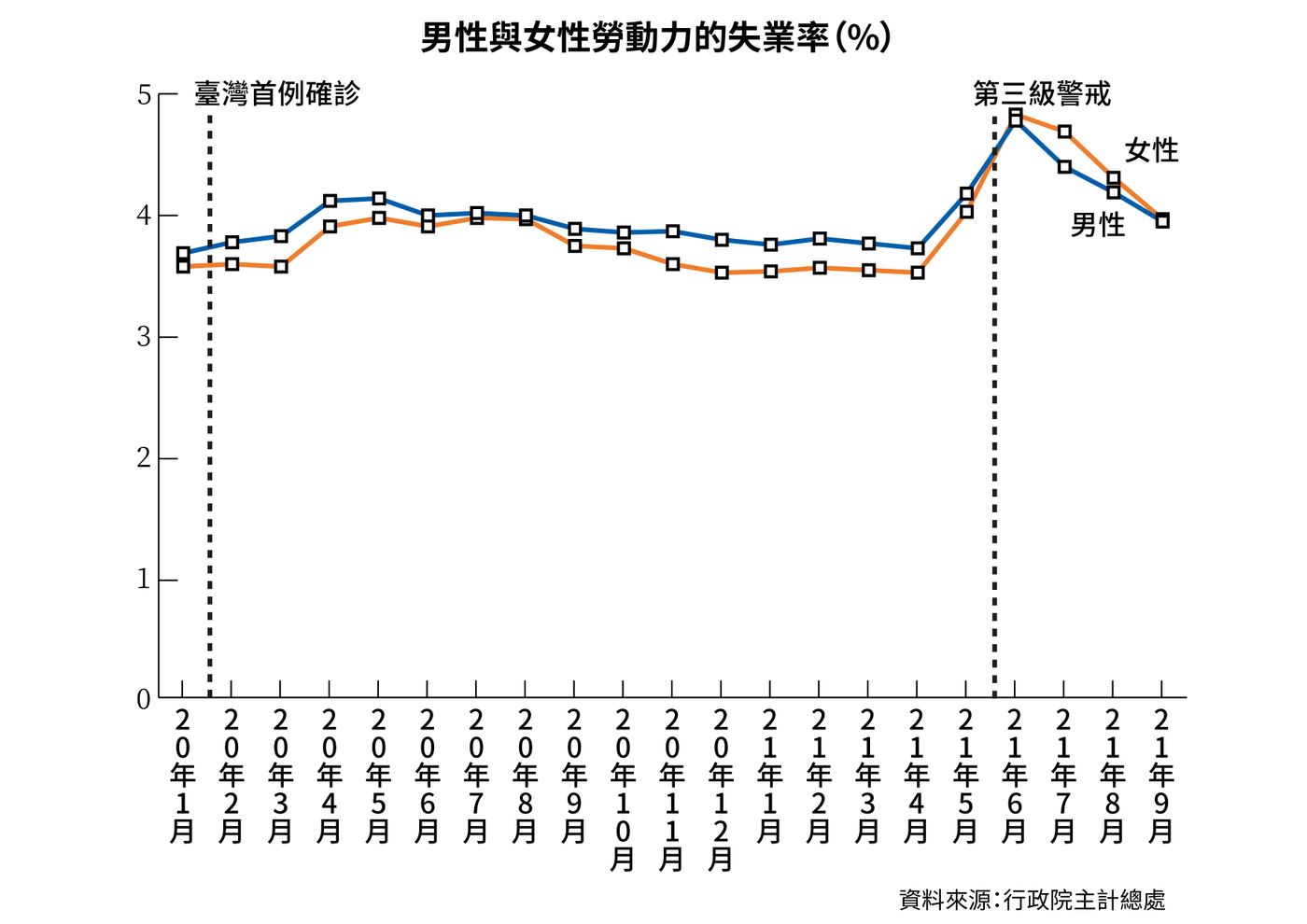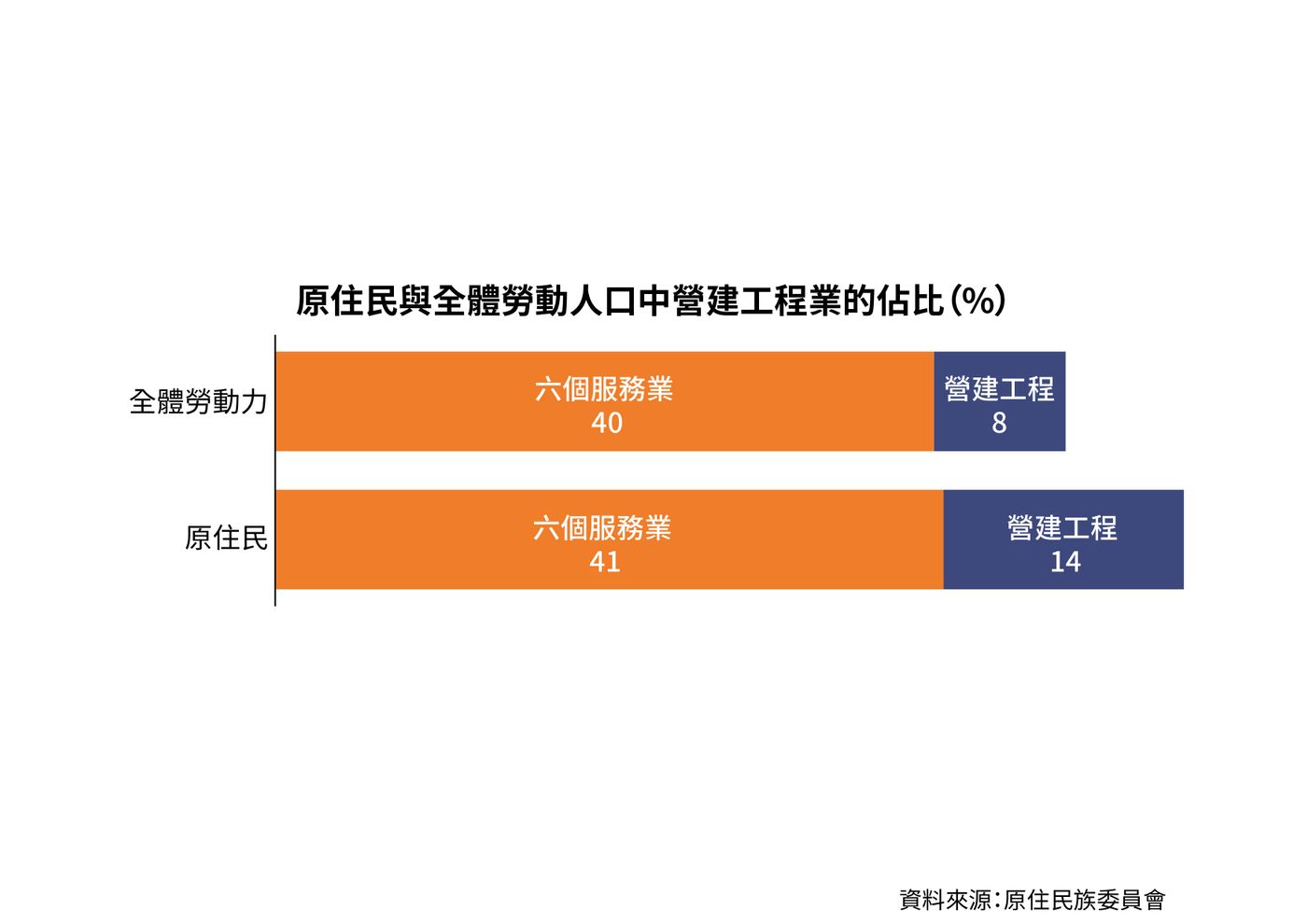Women and low-wage labor: Vulnerable groups created by the epidemic
Wu Minhui, Liang Jinghong, Chen Jinrong/Taipei Report
In early 2020, the COVID-19 storm swept the world. On January 21 of the same year, Taiwan had its first confirmed case, and so far the long-term war against the virus has not been lifted. In mid-May 2021, the number of confirmed cases soared, and the Central Epidemic Command Center soon announced that the entire Taiwan would be upgraded to a three-level alert. It was not until late July that it was lowered to the second-level alert, and some restrictions were relaxed.
The two waves of the epidemic from last year to this year have hit Taiwan's economy hard, and the impact of the second wave of the epidemic is particularly obvious. According to the Statistics Office, the unemployment rate in June 2021 is 4.8%, a 10-year high. Among the unemployed, it is found that the damaged industries are not the same, and the labor backgrounds affected are also different. Under the raging epidemic, vulnerable groups in the labor market have emerged one after another. Society may ignore it, and some groups may be hit harder by the epidemic than others.

Person-to-person contact in the service industry hit hard by the epidemic
When the epidemic is severe, the impact of various industries shows a polarized trend. According to the statistics of the General Accounting Office, June 2021 can be said to be the peak of unemployment, and the top six industries with the largest decrease in the number of employees are all service industries that require interpersonal contact. Among them, the number of people employed in the accommodation and catering industry fell the most, with a decrease of more than 60,000 people compared with January 2020 before the epidemic.
The industries with the largest increase in employment include non-services or professional services, which are more resilient to the epidemic than general services. Liao Peiru, a professor at the Department of Economics at National Taiwan University, explained that the impact of the new crown epidemic on the economy is very different from the previous economic impact. Since the public must maintain social distance, the catering industry, tourism and travel industry, accommodation industry, retail service industry, etc. are seriously affected, all of which require physical contact between people. Liao Peiru said that these industries cannot be changed to the form of working from home, and it is difficult to operate without physical contact, so they have been severely hit by the new crown epidemic.

Low-wage workers hit by pandemic, income distribution worsens
This report classifies industries where the average monthly salary of individuals is less than NT$44,000 as low-wage industries, and industries above this level as medium-high-wage industries. Overall, in the two waves of the epidemic, low-wage industries were severely hit, while medium- and high-wage industries were hardly affected. Since March 2020, the number of employed people in low-wage industries has decreased compared with the previous year. Even if the epidemic eases in the second half of the year, there has not been a significant rebound.
The epidemic briefly stabilized in March 2021, and was hit hard by the second wave of the outbreak in May, and the number of employees fell sharply. Conversely, even in the worst months of the pandemic, employment in mid- to high-paying industries increased from the previous year. It can be seen that the workers who have withdrawn from the labor market due to the impact of the epidemic are mainly low-wage workers, while middle- and high-wage workers are relatively unaffected. Such a phenomenon may lead to a worsening of the gap between the rich and the poor.

Women's unemployment rate surpasses men's for the first time in nearly 25 years
Looking at the gender difference in unemployment rate, it can be found that under the impact of the two waves of the epidemic, the rate of increase in the unemployment rate of women is higher than that of men. As the epidemic heats up, the female unemployment rate has risen sharply. From June to September 2021, the unemployment rate of women will continue to surpass that of men, which is the first time in the nearly 25 years since 1996 that the unemployment rate of women has surpassed that of men.

Women face precarious employment
Further research into the reasons for unemployment shows that the proportion of the total unemployed population (Note 1) who lost their jobs due to "contraction or closure of workplace business" has increased significantly with the epidemic. At the peak of the unemployment rate (June 2021), the proportion of women who lost their jobs due to "contraction or closure of workplace operations" increased from 26% before the epidemic to 59%, surpassing the 48% of men.
Note 1: The data before the epidemic is the average for the whole year of 2019, and the data after the epidemic is the peak of the unemployment rate in the second wave of the epidemic (June 2021).

Why is the impact of the epidemic on the female workforce more severe than that of men? If you look closely at the distribution of the employment population of men and women, you can find clues. According to the statistics of the General Accounting Office, 49% of the male employed population are in the service industry, while 72% of the female employed population are in the service industry, a difference of more than 20%. Looking at the first six service industries hit hard by the epidemic, men accounted for 34% of the employed population in these industries, while women accounted for 46%. The gender difference in the labor force of various industries makes women face more employment instability than men during the epidemic.

Aboriginal unemployment is a serious problem, which deserves continuous attention
This report calculates the gap between the Aboriginal unemployment rate and the overall unemployment rate based on the Aboriginal Peoples Commission's Employment Survey. The data shows that from 2017 to the first quarter of 2021, the unemployment rate of Aboriginal people has been higher than the overall average. After the outbreak of the epidemic in early 2020, the gap between the unemployment rate of aboriginal people and the general population has narrowed.
However, the Aboriginal Employment Survey in the second quarter of 2021 was suspended once due to the epidemic, so it was not possible to know how employment was affected. Analyzing the proportion of the aboriginal population engaged in industries, it can be found that the proportion of the aborigines working in the "construction and engineering industry" is significantly higher than that of the entire population. This industry has been less affected by the epidemic. As for the six service industries that have been hit the hardest by the epidemic, The ratio of Aboriginal people to the overall population is very small. Therefore, on the whole, the impact of the epidemic is less obvious. However, the long-term unemployment problem of the aborigines is still serious. Whether the epidemic occurs or in normal times, it is a social issue that Taiwan society should pay attention to.
Like my work? Don't forget to support and clap, let me know that you are with me on the road of creation. Keep this enthusiasm together!
